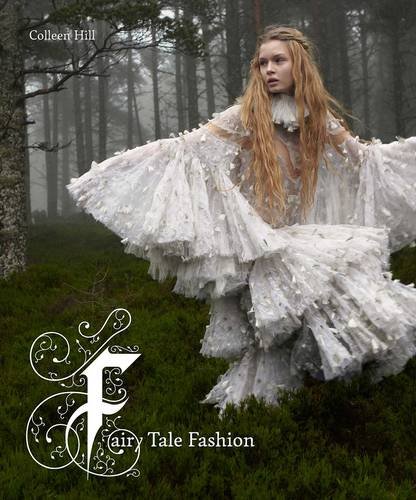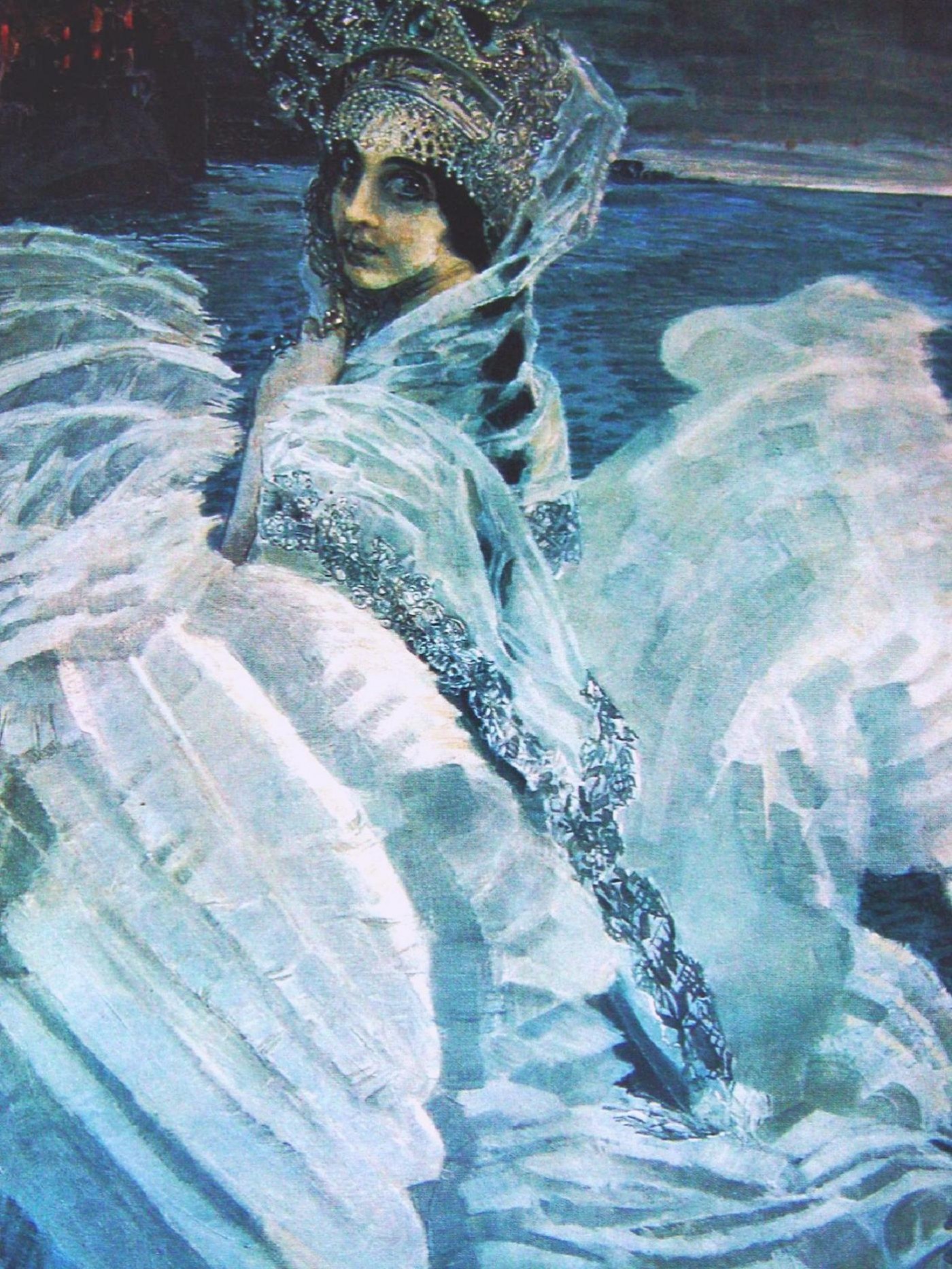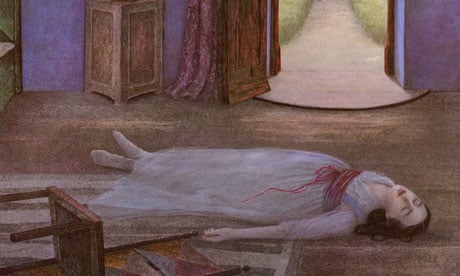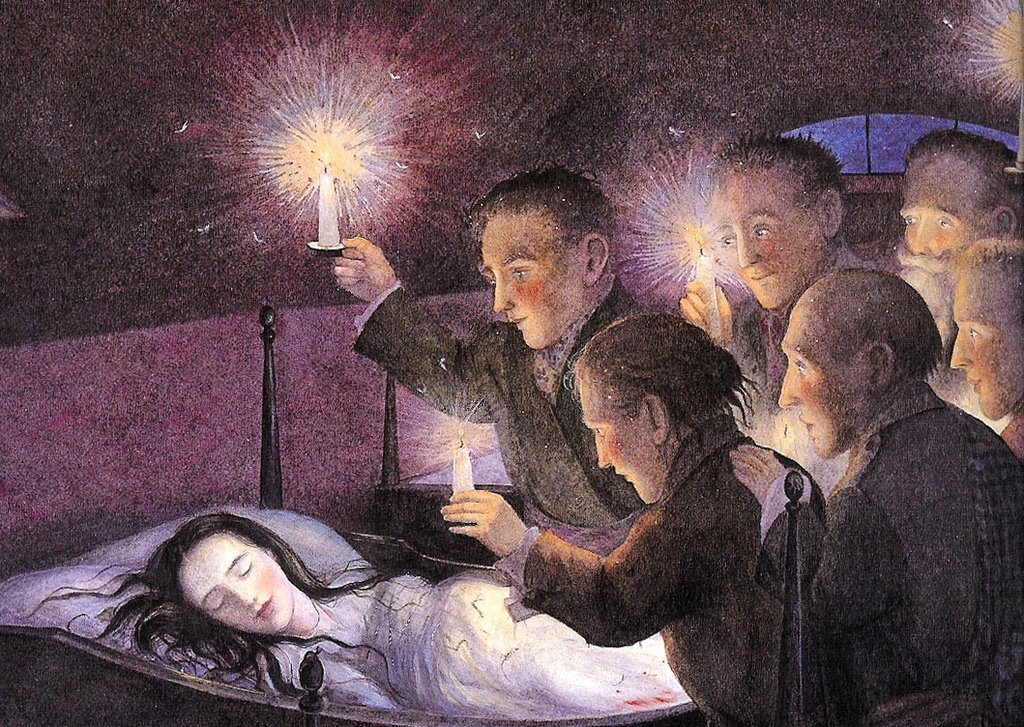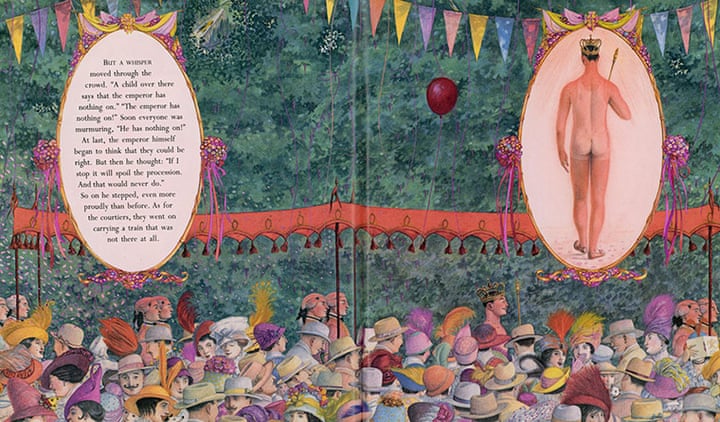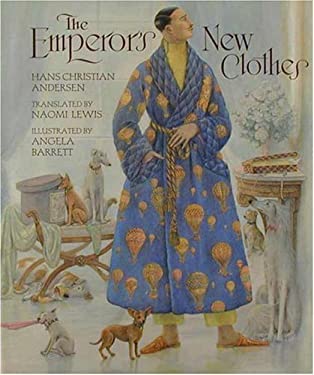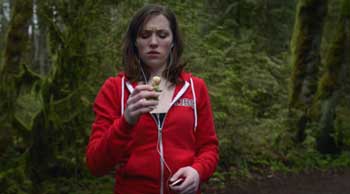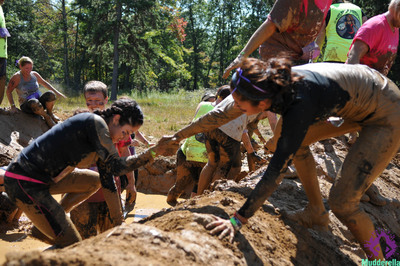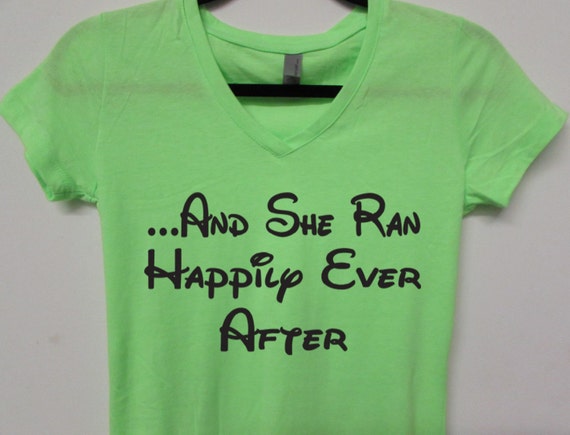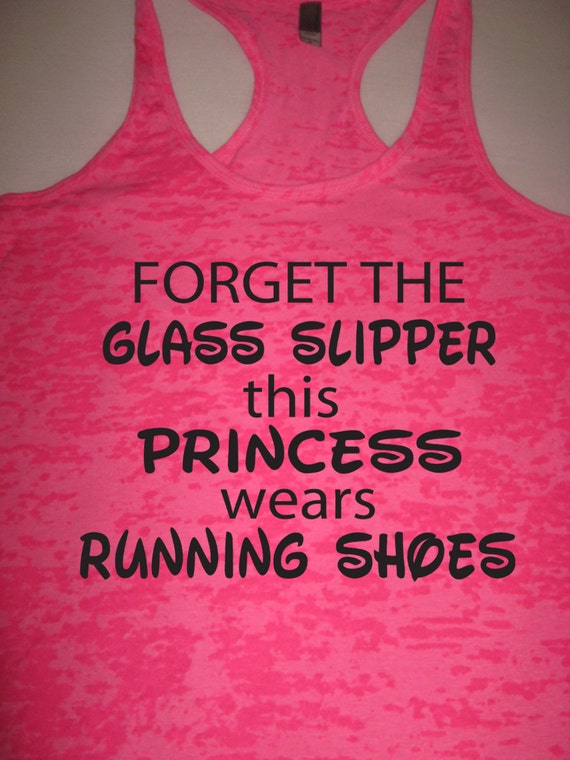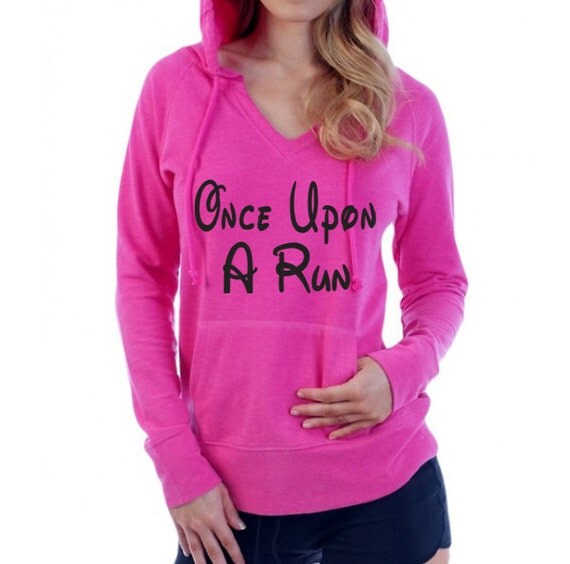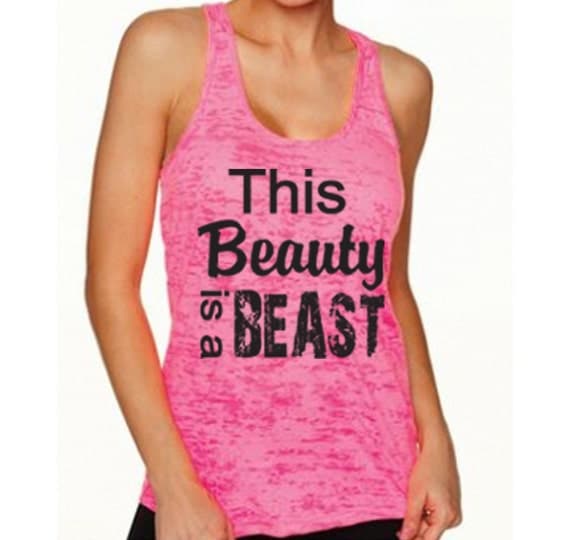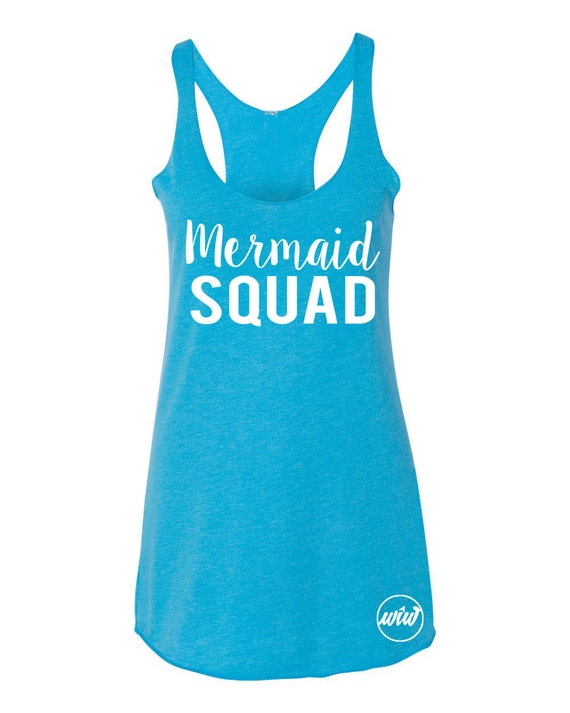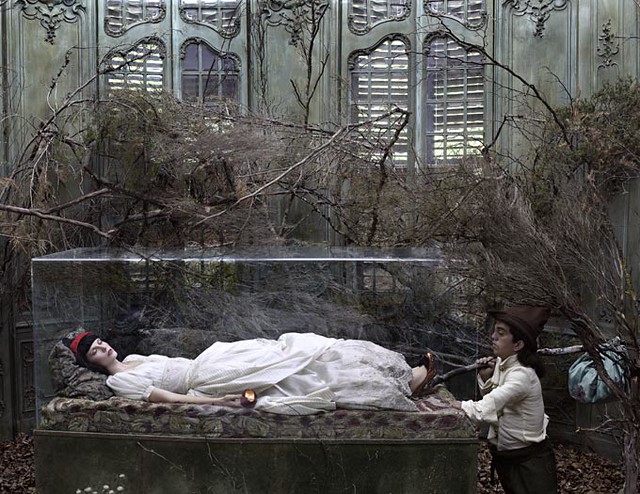Here's some sites I've added to the link list on the right and wanted to highlight-
Megan Kearney's Beauty and the Beast tumblr-I've mentioned this a couple of times after linking something here that I found on Megan's site. Someone once called me the online expert on Beauty and the Beast, which is very flattering but sadly not at all true. Megan Kearney, on the other hand, just might be (although we can't forget Heidi Anne Heiner of Surlalune!). This site is a source of all kinds of BATB inspiration, and she's introduced me to versions and illustrations and other fun facts I had no idea existed! The site also gives updates to her online BATB comic. I'll admit I haven't been following along, mainly because I really don't like reading anything of substantial length on my computer-but I've got Volume One of the printed version on my wishlist and from everything I've heard it seems like this could be the next best version of my favorite fairy tale.
Fairy Bat Tales- Aiyanne Chan just finished a fascinating series looking into the Magical Items to Survive the Grimms' Fairyland. She read ALL the way through the Grimm fairy tales (something I've never even done!) and took copious notes on all of the magical items found there. It's really eye opening, there are so many interesting magical elements in the lesser known tales. I think this would be great inspiration for writers who want to weave fairy tale elements into their stories, or anyone who wants a glimpse of folklore beyond the standard tales we hear about over and over.
*Housekeeping Notes: In the process of editing my link list I accidentally deleted it! I've been working on getting everything back, but if any of the links don't work, or something is missing you would also consider a great online resource, let me know in the comments!
And, I would love to have more suggestions of your favorite fairy tale books! Last chance!
Thursday, June 30, 2016
Sunday, June 26, 2016
Twelve Dancing Princesses Dining Room Mural
Grace painted her dining room to be a "Twelve Dancing Princesses" mural:
LOVE IT
(adding to my dream home ideas...Tony you'd be cool with this right?)
Friday, June 24, 2016
Once Upon a Grind by Cleo Coyle
Spotted this book in the mystery section of my library, Once Upon a Grind by Cleo Coyle. Book description:
"When coffeehouse manager turned amateur sleuth Clare Cosi serves "magic" beans for a Fairy Tale Fall event, she brews up a vision that leads to a sleeping beauty in Central Park; a big, bad wolf of Wall Street; and an East Side enclave with storybook secrets...

Fairy tale fever has descended on New York City. Broadway fans are flocking to Red Riding Hood: The Musical; museums are exhibiting art inspired by the Brothers Grimm; and Clare Cosi and her merry band of baristas give their coffee truck a "Jack and the Beanstalk" makeover for a Central Park festival. Clare's coffee hunter ex-husband contributes a bag of African beans with alleged magical properties. His octogenarian mother entertains customers with readings of the grinds, but Clare remains skeptical--until she receives a vision that helps her find a young model's body in the park's woods.
The police dismiss "sleeping beauty" as the victim of a drug overdose. Then Clare uncovers evidence that points to a list of suspects--from a New York Giant to quite a few wicked witches--and a cold case murder that reaches back to the Cold War. Now Clare is really in the woods with a dangerous predator on her heels and an investigation that leads from a secret Prince Charming Club right back to her own NYPD detective boyfriend. If she doesn't solve this mystery, those magic beans predict an unhappy ending."
I'll be honest, it's not the best writing ever (although pretty typical for most current mystery novels), but for a book that features three of my favorite things-murder mysteries, coffee, and fairy tales, I was willing to give it a chance. The book begins with the main character serving coffee at a Fairy Tale Festival, and the fairy tale references don't end there. In fact I was pretty impressed at how the author was able to incorporate so many fairy tale characters and motifs into the story. It was a fun, easy read. And, as the cover promises, there are recipes in the back, although I can't say whether or not they're "wicked good" as claimed, since I didn't try any. But some are fairy tale themed! Snow White Chocolate Mocha, Cinderella's Pumpkin Cake, Poisoned Apple Cake, etc.
Also on the subject-this sign is on the coffee maker at my office. I love those fairy tale connections that help to show how enchanted real life is too-coffee is pretty magical, when you think about it!
"When coffeehouse manager turned amateur sleuth Clare Cosi serves "magic" beans for a Fairy Tale Fall event, she brews up a vision that leads to a sleeping beauty in Central Park; a big, bad wolf of Wall Street; and an East Side enclave with storybook secrets...

Fairy tale fever has descended on New York City. Broadway fans are flocking to Red Riding Hood: The Musical; museums are exhibiting art inspired by the Brothers Grimm; and Clare Cosi and her merry band of baristas give their coffee truck a "Jack and the Beanstalk" makeover for a Central Park festival. Clare's coffee hunter ex-husband contributes a bag of African beans with alleged magical properties. His octogenarian mother entertains customers with readings of the grinds, but Clare remains skeptical--until she receives a vision that helps her find a young model's body in the park's woods.
The police dismiss "sleeping beauty" as the victim of a drug overdose. Then Clare uncovers evidence that points to a list of suspects--from a New York Giant to quite a few wicked witches--and a cold case murder that reaches back to the Cold War. Now Clare is really in the woods with a dangerous predator on her heels and an investigation that leads from a secret Prince Charming Club right back to her own NYPD detective boyfriend. If she doesn't solve this mystery, those magic beans predict an unhappy ending."
I'll be honest, it's not the best writing ever (although pretty typical for most current mystery novels), but for a book that features three of my favorite things-murder mysteries, coffee, and fairy tales, I was willing to give it a chance. The book begins with the main character serving coffee at a Fairy Tale Festival, and the fairy tale references don't end there. In fact I was pretty impressed at how the author was able to incorporate so many fairy tale characters and motifs into the story. It was a fun, easy read. And, as the cover promises, there are recipes in the back, although I can't say whether or not they're "wicked good" as claimed, since I didn't try any. But some are fairy tale themed! Snow White Chocolate Mocha, Cinderella's Pumpkin Cake, Poisoned Apple Cake, etc.
Also on the subject-this sign is on the coffee maker at my office. I love those fairy tale connections that help to show how enchanted real life is too-coffee is pretty magical, when you think about it!
Monday, June 20, 2016
Grimms' Frog King vs. Frog Prince
In the Grimms' first edition of Household Tales, from 1812, there were two versions of "Frog Prince", one in each volume. The first, "Frog King, or Iron Henry" is actually the version that we know today as "Frog Prince," and the original "Frog Prince" is now virtually unknown.
In "Frog King," there is one daughter who meets the frog after she loses her golden ball in a well, and promises him to eat off her plate and sleep in her bed in order to get it back (although she doesn't actually think she will have to follow through with that promise). Her father forces her to fulfill that promise, and after she gets frustrated, she lthrows the frog against a wall, and he transforms into a prince (ironically, not a King). The prince's friend Henry is then introduced (kind of randomly, IMO) as being so joyful his master is released from his enchantment, that he had ordered iron bands to be wrapped around his heart "to keep it from bursting with grief." As the prince and princess drive away, the breaking bands cause loud cracking noises.
In "Frog Prince," there are three daughters. The eldest discovers that a frog is making the water in their well murky. He offers to make it clear again if she will be his sweetheart, and she refuses. The same thing happens to the middle daughter, but the youngest decides making an empty promise is worth getting clear water. That night the frog comes to her, and of her own accord she reluctantly opens the door to him, and he sleeps at the foot of her bed. He does this for three nights; on the last she tells him she won't let him sleep there any more, but she wakes up to find he's transformed into a Prince, just because she allowed herself to be his sweetheart. They married and her sisters were jealous. This version was later excluded from subsequent editions of Grimms fairy tales.

Which version do you like better?
Also, for an interesting comparison of "Frog King" from the first to last edition, this page allows you to literally see each phrase/section side by side (way easier than trying to follow along in two separate books!)
(Also, thanks for those of you who have offered suggestions on our fairy tale summer reading post! Be sure to get in your suggestions if you haven't already!)
Images-Unknown artist (Please share in the comments if you know!), William R Symonds
Texts can be read in either of these books:
The Complete First Edition: The Original Folk and Fairy Tales of the Brothers Grimm, translated and edited by Jack Zipes
Surlalune's Frog Prince and other Frog Tales from Around the World
In "Frog King," there is one daughter who meets the frog after she loses her golden ball in a well, and promises him to eat off her plate and sleep in her bed in order to get it back (although she doesn't actually think she will have to follow through with that promise). Her father forces her to fulfill that promise, and after she gets frustrated, she lthrows the frog against a wall, and he transforms into a prince (ironically, not a King). The prince's friend Henry is then introduced (kind of randomly, IMO) as being so joyful his master is released from his enchantment, that he had ordered iron bands to be wrapped around his heart "to keep it from bursting with grief." As the prince and princess drive away, the breaking bands cause loud cracking noises.
In "Frog Prince," there are three daughters. The eldest discovers that a frog is making the water in their well murky. He offers to make it clear again if she will be his sweetheart, and she refuses. The same thing happens to the middle daughter, but the youngest decides making an empty promise is worth getting clear water. That night the frog comes to her, and of her own accord she reluctantly opens the door to him, and he sleeps at the foot of her bed. He does this for three nights; on the last she tells him she won't let him sleep there any more, but she wakes up to find he's transformed into a Prince, just because she allowed herself to be his sweetheart. They married and her sisters were jealous. This version was later excluded from subsequent editions of Grimms fairy tales.

Which version do you like better?
Also, for an interesting comparison of "Frog King" from the first to last edition, this page allows you to literally see each phrase/section side by side (way easier than trying to follow along in two separate books!)
(Also, thanks for those of you who have offered suggestions on our fairy tale summer reading post! Be sure to get in your suggestions if you haven't already!)
Images-Unknown artist (Please share in the comments if you know!), William R Symonds
Texts can be read in either of these books:
The Complete First Edition: The Original Folk and Fairy Tales of the Brothers Grimm, translated and edited by Jack Zipes
Surlalune's Frog Prince and other Frog Tales from Around the World
Friday, June 17, 2016
Summer Reading
Americans have associated summer with light, fun reading for over 100 years. We here at Tales of Faerie all love fairy tales, but there are SO many new books out there, it's hard to narrow down what to choose!
So I want to know from you-what are your absolute favorite fairy tale books? They can be fiction or nonfiction, as long as you love them! Let me know in the comments, and if there's enough suggestions I'll make it into recommended reading post! Please include a short description of the book(s)-don't worry about making it a book review or anything, just let us know what type of book it is (is it a dark, historical retelling of Snow White, or a fun, teen romance adaptation of Cinderella?)
1st edition of Grimm tales
So I want to know from you-what are your absolute favorite fairy tale books? They can be fiction or nonfiction, as long as you love them! Let me know in the comments, and if there's enough suggestions I'll make it into recommended reading post! Please include a short description of the book(s)-don't worry about making it a book review or anything, just let us know what type of book it is (is it a dark, historical retelling of Snow White, or a fun, teen romance adaptation of Cinderella?)
Tuesday, June 14, 2016
Fairy Tale Fashion: Swan Maidens
One of the things I love about my new obsession, the book Fairy Tale Fashion by Colleen Hill, is that not only does she discuss some of the obvious fairy tales with fashion connections (Cinderella, Little Red Riding Hood), but some lesser knowns, especially ones that I wouldn't have necessarily thought of in terms of clothing being significant. She has sections on Diamonds and Toads, Snow Queen, and Swan Maidens.
There are countless variations of Swan Maiden tales (and some other related mermaid tales)-stories about an enchanted maiden who takes off her swan feathers and becomes human, only to have a man steal that feather dress and take her as his wife. After years go by, one of her children eventually finds the feather dress, and their mother takes it and returns to her swan form and leaves. Different tales have various endings at this point-sometimes she just never comes back, other times her husband searches for her and gets her back.
Obviously, the dress of feathers is a central part of this fairy tale. It has the power to change her form, which in turn influences where she lives and with whom.
Some tales tell not of enchanted female swans, but males, whose sisters must undergo trials to bring them back to their original form. One thing I never noticed before was how, in the most commonly known versions of these stories, they all seem to emphasize the burden of making clothes.
In both the Grimms' "Six Swans" and Andersen's similar "Wild Swans," the sister must fulfill two things in order to bring her brothers back: maintain silence, and make them each enchanted shirts. In "Six Swans," the process is a little more idealized; she must make them out of the fictional starflowers, but she spends six years laboring over those shirts for her six brothers. Interestingly, the curse was achieved when their stepmother threw enchanted white shirts over each of them. I this case, clothing was the key to both cursing and restoring their rightful human forms.
In "Wild Swans," the process is described even more painfully, for Elisa must make her brothers' shirts from fabric made from stinging nettles. The painful nettles give her hands blisters.
Interestingly, Joseph Jacobs' "Swan Maidens", although it belongs to the first tale type mentioned, hints at this burden of clothes making as well. After the swan wife has resumed her form, her husband seeks her out, and is told he can only get her back if he can identify his wife from among a group of identical sisters. He touches each of their hands, and knows his wife by the indentation of a needle on her forefinger, caused by making clothes for their children. The very act of clothing a family leaves its mark on a woman.
Jacobs' tale is a little more ambiguous. Given that his wife immediately returned to the sea upon finding her swan feathers, one wonders if returning to her human life is really a happy ending for her. Her husband stole her feathers, and also used trickery to steal enchanted objects in order to find her again, so he isn't exactly a flawless character. As Hill points out, the fact that the swan maiden is willing to leave her children "may be unfathomable to many readers," but for all we know she could have had children in her former life too-in some related tales it's her former lover that she wants to return to. Her husband apparently gives no thought to her past, and clearly not to her wishes on the matter.
These tales, while bittersweet, are really powerful tales with modern feminist messages: women are more than just means to produce children and clothing for their husbands. They often have their own hopes and dreams and longings. The life of a wife and mother, whether it's wanted or unwanted, is quite painful-from bearing children, to all the tasks involved with raising the family.
When I imagine what it might have been like to live as a woman in pre-industrial society, I often think of the cooking and cleaning, which can be a burden even now, and even more so before modern conveniences. But I rarely even think of how difficult the task of making clothing would have been. Women would often have done the whole process themselves-from making the fabric, to sewing the clothes together. Tales that address spinning really all serve to point out how unwanted the chore was, and these swan tales make us sympathize with the time and discomfort it took to make the clothes.
And although modern machines have certainly made the process of making clothes easier, it's still by no means a simple, instantaneous process. The process of growing and spinning and sewing and embellishing are simply more hidden from us today, yet even the clothes we buy and wear were often made at the cost of other people's comforts and even basic human rights. I've been learning and reading more about the fast fashion industry and the fact that, despite getting some publicity, most of our clothes still end up being made in sweatshops. I can recommend some resources if anyone else is interested in learning more about that (this documentary is currently on Netflix), but maybe these swan tales can help us think a little more about who makes our clothes, and sympathize a little more with the hours of work it takes.
There are countless variations of Swan Maiden tales (and some other related mermaid tales)-stories about an enchanted maiden who takes off her swan feathers and becomes human, only to have a man steal that feather dress and take her as his wife. After years go by, one of her children eventually finds the feather dress, and their mother takes it and returns to her swan form and leaves. Different tales have various endings at this point-sometimes she just never comes back, other times her husband searches for her and gets her back.
Obviously, the dress of feathers is a central part of this fairy tale. It has the power to change her form, which in turn influences where she lives and with whom.
Mikhail Vrubel, The Swan Princess, 1900
Some tales tell not of enchanted female swans, but males, whose sisters must undergo trials to bring them back to their original form. One thing I never noticed before was how, in the most commonly known versions of these stories, they all seem to emphasize the burden of making clothes.
In both the Grimms' "Six Swans" and Andersen's similar "Wild Swans," the sister must fulfill two things in order to bring her brothers back: maintain silence, and make them each enchanted shirts. In "Six Swans," the process is a little more idealized; she must make them out of the fictional starflowers, but she spends six years laboring over those shirts for her six brothers. Interestingly, the curse was achieved when their stepmother threw enchanted white shirts over each of them. I this case, clothing was the key to both cursing and restoring their rightful human forms.
"The Wild Swans", Gordon Robinson
In "Wild Swans," the process is described even more painfully, for Elisa must make her brothers' shirts from fabric made from stinging nettles. The painful nettles give her hands blisters.
Interestingly, Joseph Jacobs' "Swan Maidens", although it belongs to the first tale type mentioned, hints at this burden of clothes making as well. After the swan wife has resumed her form, her husband seeks her out, and is told he can only get her back if he can identify his wife from among a group of identical sisters. He touches each of their hands, and knows his wife by the indentation of a needle on her forefinger, caused by making clothes for their children. The very act of clothing a family leaves its mark on a woman.
Jacobs' tale is a little more ambiguous. Given that his wife immediately returned to the sea upon finding her swan feathers, one wonders if returning to her human life is really a happy ending for her. Her husband stole her feathers, and also used trickery to steal enchanted objects in order to find her again, so he isn't exactly a flawless character. As Hill points out, the fact that the swan maiden is willing to leave her children "may be unfathomable to many readers," but for all we know she could have had children in her former life too-in some related tales it's her former lover that she wants to return to. Her husband apparently gives no thought to her past, and clearly not to her wishes on the matter.
These tales, while bittersweet, are really powerful tales with modern feminist messages: women are more than just means to produce children and clothing for their husbands. They often have their own hopes and dreams and longings. The life of a wife and mother, whether it's wanted or unwanted, is quite painful-from bearing children, to all the tasks involved with raising the family.
Anna and Elena Balbusso
When I imagine what it might have been like to live as a woman in pre-industrial society, I often think of the cooking and cleaning, which can be a burden even now, and even more so before modern conveniences. But I rarely even think of how difficult the task of making clothing would have been. Women would often have done the whole process themselves-from making the fabric, to sewing the clothes together. Tales that address spinning really all serve to point out how unwanted the chore was, and these swan tales make us sympathize with the time and discomfort it took to make the clothes.
And although modern machines have certainly made the process of making clothes easier, it's still by no means a simple, instantaneous process. The process of growing and spinning and sewing and embellishing are simply more hidden from us today, yet even the clothes we buy and wear were often made at the cost of other people's comforts and even basic human rights. I've been learning and reading more about the fast fashion industry and the fact that, despite getting some publicity, most of our clothes still end up being made in sweatshops. I can recommend some resources if anyone else is interested in learning more about that (this documentary is currently on Netflix), but maybe these swan tales can help us think a little more about who makes our clothes, and sympathize a little more with the hours of work it takes.
Friday, June 10, 2016
Angela Barrett on her Fairy Tale Illustrations
"I was most inspired by pity for the beast’s awful loneliness and self-disgust. His tragedy is to know all about beauty and how to create it in everything around him, but to miss it in himself."
— Angela Barrett, on illustrating Max Eilenberg’s ‘Beauty and the Beast’
Quote found on Meagan Kearney's Beauty and the Beast site. Angela Barrett's illustrations have long been some of my absolute favorite for BATB, inlcuding the Tales of Faerie header image
Retold by Max Eilenberg, it is set, at Barrett's request, in the 1860s - "the period when there was the greatest difference between the male and the female silhouette - men were tall and thin while women's skirts were wider than ever".
Barrett on Snow White:
"I always feel that my happy endings are somehow inadequate. I'm wary of perfect conclusions. I'm always disappointed by the way Jane Austen ties things up so easily at the end ... The truth is, I'm more easily moved by distress. I'm no good at jolly scenes of dancing and merriment - laughter can be so sinister."
"Naomi Lewis's retelling of The Emperor's New Clothes (Walker Books, 2000) gave Barrett a longed-for opportunity to show some very different talents. It's set in 1913, at the end of the belle epoque, in an imaginary kingdom. The drawing is glorious and only an artist with Barrett's knowledge of fashion, and her hands-on experience of dress-making, could give this story such elegant, wickedly funny authenticity. And because "it's such a one-joke story", she has introduced a host of royal dogs, including a pompadoured poodle (himself half-naked) who blushes with embarrassment at the sight of the emperor's pink bottom."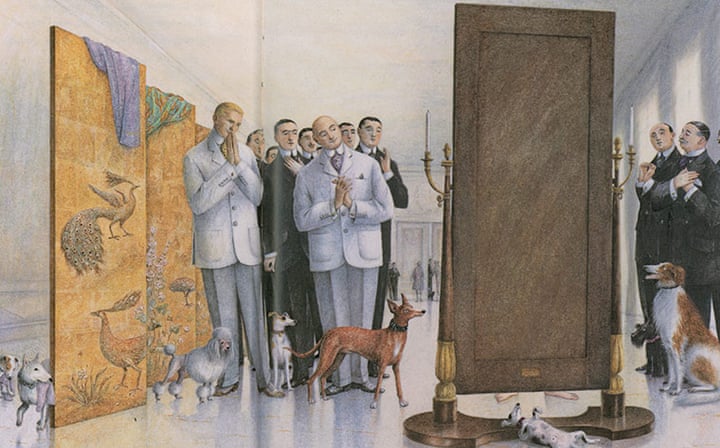

-All other quotes from This Interview on the Guardian
Wednesday, June 8, 2016
Fairy Tales for Runners
I typically read fairy tale blogs first thing in the morning, sipping my coffee to help me wake up, and then once I'm feeling semi-human I go for a run. I'm not a super hardcore, long distance runner-no marathons for me (although I've considered the Disney Princess half marathon...the only thing that could ever motivate me to run 13 miles would be the Disney Parks). For me, running has become a time when I often mull over the fairy tale issues I've just read about, and sometimes come up with ideas for new posts. It helps that I usually run through forest preserves, which are as close to nature as Chicago suburbanites like myself ever really get. I know it's not at all the same, but it helps give me a slightly better idea of what it may have been like for the tellers and listeners of stories generations ago. As Sara Maitland's book From the Forest reminds us, just being in that setting can influence how we read and think about fairy tales.
I've shared before how running through somewhat isolated forest preserves can make me feel unnervingly similar to Red Riding Hood (especially when wearing my red hoodie)-hidden paths tend to be places where predators lurk, and there are all too many stories of lone women who were attacked or threatened on trails in this area. Sometimes there's a rustle of an animal nearby, and although it's most likely a deer or squirrel or something completely safe, my heart races and I can only imagine what it would feel like to see a wolf or other dangerous animal there.
But not all connections between running and fairy tales are so somber! The Gingerbread Man is often used as a motivational character for racing:
I recently heard of an obstacle race for women called Mudderella. I couldn't find anywhere that directly linked it to the fairy tale Cinderella, which is interesting because the title itself is clearly referencing the story. The motto is "own your strong", and the purpose is to encourage women to celebrate their strength in all forms. It seems to be a very positive way of having modern women relate to Cinderella-being covered in ashes/mud, but out of strength and not victimization. One of the charity sponsors is "Futures Without Violence," which aims to end domestic abuse.
I've shared these workout clothes from WorkItWear before, but they go along perfectly with the theme. I love that they challenge the idea that girls who love fairy tales/Disney Princesses can't also be athletic!
I've shared before how running through somewhat isolated forest preserves can make me feel unnervingly similar to Red Riding Hood (especially when wearing my red hoodie)-hidden paths tend to be places where predators lurk, and there are all too many stories of lone women who were attacked or threatened on trails in this area. Sometimes there's a rustle of an animal nearby, and although it's most likely a deer or squirrel or something completely safe, my heart races and I can only imagine what it would feel like to see a wolf or other dangerous animal there.
Red Riding Hood in the pilot of "Grimm"
But not all connections between running and fairy tales are so somber! The Gingerbread Man is often used as a motivational character for racing:
London Marathon 2010
Shop Fitness (no longer available)
I recently heard of an obstacle race for women called Mudderella. I couldn't find anywhere that directly linked it to the fairy tale Cinderella, which is interesting because the title itself is clearly referencing the story. The motto is "own your strong", and the purpose is to encourage women to celebrate their strength in all forms. It seems to be a very positive way of having modern women relate to Cinderella-being covered in ashes/mud, but out of strength and not victimization. One of the charity sponsors is "Futures Without Violence," which aims to end domestic abuse.
I've shared these workout clothes from WorkItWear before, but they go along perfectly with the theme. I love that they challenge the idea that girls who love fairy tales/Disney Princesses can't also be athletic!
If you like the idea of wearing workout clothes inspired by Disney characters, there's also the fitness looks on Disneybound!
Sunday, June 5, 2016
Fairy Tale Fashion: Snow White
Snow White is one of the most well known fairy tales, and because it's such a definitive story in the genre, it's easy to forget that it's a tale that actually breaks some typical fairy tale stereotypes, especially when it comes to physical appearance and beauty.
In the world of fairy tales, beauty and goodness are almost always synonymous-physical beauty is usually representative of inner character. The witch is intriguing because she is evil and yet beautiful. She is not only murderous, but cannibalistic, wanting to eat Snow White's heart and liver (perhaps to somehow absorb her youth and beauty through the act).
Snow White herself stands out because of her black hair. When a beautiful fairy tale heroine's hair is described, it is almost always blonde-and not just "blonde" but "golden," so we are reminded of more than fair hair, but also of wealth and royal status. Thus "Snow White embodies a peculiar dichotomy; whereas her stepmother is bad but beautiful, Snow White is good, but raven-haired." So the characters' very appearances, which are integral to the plot, stand out against other fairy tales. (EDIT: Julia Mavroidi mentioned in the comments that Snow White's hair was not always black-in fact, in the first edition of the Grimms, it was her eyes that were ebony!)
The apple is the most iconic image of Snow White, but the apple only comes after two other temptations-stay laces and a poisoned comb. Other people have analyzed these objects as representing Snow White's vanity, an observation that chillingly likens her to the witch. And while there are other reasons to suppose that Snow White is potentially in danger of placing too much value on her own beauty, maybe that assessment of the temptation objects is a little unfair.
First of all, in my opinion, we have to remember that the disguised witch offered the goods to Snow White. There's a difference between seeking things out and accepting what is offered-she is not like the sisters in Beauty and the Beast who seek out dresses and jewels.
But Colleen Hill also reminds us that Snow White was a princess. She was used to having a vast wardrobe of the latest fashions, and also probably someone to dress her. Even though the story doesn't indicate she is discontent with her new life with the dwarfs, it's safe to assume she might miss some of her old pleasures from the castle. In fact, the witch begins by a not-so-subtle insult; "Oh, my child, what a sight you are. Come, let me lace you up properly." In addition to that immediate pressure to improve on her looks, Hill says, corsetry "had other connotations as well, such as beauty, social rank, and morality." We know that Snow White values neatness and cleanliness in her new duties as housekeeper for the dwarfs, so it's natural that the desire to have a tidy home would also extend to a desire for a well kept appearance.
Probably the thing that most hints towards Snow White's vanity is the fact that the apple is described as being appealing to look at-"white with red cheeks"-just like Snow White. Yet those who condemn Snow White for desiring a pretty apple don't condemn the Prince for desiring Snow White for that same feature (while dead/in a coma)-although in the Grimms' version he really should be.
Hill also points out how much pressure was put on royal females to appear beautiful. Queens would be sharply critiqued for perceived flaws in appearance, yet paradoxically also condemned for being too vain. You could say that the Queen witch was really a product of her culture, just as young Snow White's desires for pretty things came not only naturally but through passed down values. In fact, this pressure contributed towards historical figures who were more or less real life evil Queens-Catherine de Medici supposedly tried to eliminate Louis de Conde with a poisoned apple, and St. Ludmila (the grandmother of King Wenceslaus) was strangled with a veil by her mother in law.
The pressure to look beautiful is not an archaic relic from a misogynist past, but alive and well today, as women are continually pressured by media to find value in their looks, and told that men will only love them if they adhere to certain standards. Which is why Snow White is still such a powerful tale, and just as it indicates that the desire for beauty is passed down through generations, so it is hundreds of years later...
In the world of fairy tales, beauty and goodness are almost always synonymous-physical beauty is usually representative of inner character. The witch is intriguing because she is evil and yet beautiful. She is not only murderous, but cannibalistic, wanting to eat Snow White's heart and liver (perhaps to somehow absorb her youth and beauty through the act).
Snow White herself stands out because of her black hair. When a beautiful fairy tale heroine's hair is described, it is almost always blonde-and not just "blonde" but "golden," so we are reminded of more than fair hair, but also of wealth and royal status. Thus "Snow White embodies a peculiar dichotomy; whereas her stepmother is bad but beautiful, Snow White is good, but raven-haired." So the characters' very appearances, which are integral to the plot, stand out against other fairy tales. (EDIT: Julia Mavroidi mentioned in the comments that Snow White's hair was not always black-in fact, in the first edition of the Grimms, it was her eyes that were ebony!)
A.H. Watson
The apple is the most iconic image of Snow White, but the apple only comes after two other temptations-stay laces and a poisoned comb. Other people have analyzed these objects as representing Snow White's vanity, an observation that chillingly likens her to the witch. And while there are other reasons to suppose that Snow White is potentially in danger of placing too much value on her own beauty, maybe that assessment of the temptation objects is a little unfair.
First of all, in my opinion, we have to remember that the disguised witch offered the goods to Snow White. There's a difference between seeking things out and accepting what is offered-she is not like the sisters in Beauty and the Beast who seek out dresses and jewels.
Dolce and Gabbana Fall 2014
Fairy tale inspired line
But Colleen Hill also reminds us that Snow White was a princess. She was used to having a vast wardrobe of the latest fashions, and also probably someone to dress her. Even though the story doesn't indicate she is discontent with her new life with the dwarfs, it's safe to assume she might miss some of her old pleasures from the castle. In fact, the witch begins by a not-so-subtle insult; "Oh, my child, what a sight you are. Come, let me lace you up properly." In addition to that immediate pressure to improve on her looks, Hill says, corsetry "had other connotations as well, such as beauty, social rank, and morality." We know that Snow White values neatness and cleanliness in her new duties as housekeeper for the dwarfs, so it's natural that the desire to have a tidy home would also extend to a desire for a well kept appearance.
Probably the thing that most hints towards Snow White's vanity is the fact that the apple is described as being appealing to look at-"white with red cheeks"-just like Snow White. Yet those who condemn Snow White for desiring a pretty apple don't condemn the Prince for desiring Snow White for that same feature (while dead/in a coma)-although in the Grimms' version he really should be.
Eugene Recuenco
Hill also points out how much pressure was put on royal females to appear beautiful. Queens would be sharply critiqued for perceived flaws in appearance, yet paradoxically also condemned for being too vain. You could say that the Queen witch was really a product of her culture, just as young Snow White's desires for pretty things came not only naturally but through passed down values. In fact, this pressure contributed towards historical figures who were more or less real life evil Queens-Catherine de Medici supposedly tried to eliminate Louis de Conde with a poisoned apple, and St. Ludmila (the grandmother of King Wenceslaus) was strangled with a veil by her mother in law.
The pressure to look beautiful is not an archaic relic from a misogynist past, but alive and well today, as women are continually pressured by media to find value in their looks, and told that men will only love them if they adhere to certain standards. Which is why Snow White is still such a powerful tale, and just as it indicates that the desire for beauty is passed down through generations, so it is hundreds of years later...
Thursday, June 2, 2016
Jenny Prater's And He Became a Handsome Prince
Be sure to check out Jenny's series on transformations in fairy tales, "And He Became a Handsome Prince", over in Halfway to Fairyland. She explores different versions of Beauty and the Beast/Animal Bridegroom tales, as well as other related tales with transformations, from the curse to the process of finding love and healing, and the ultimate restoration. She has lots of great insights and reading it reminded me of why Beauty and the Beast is my favorite fairy tale!
Disney Concept Art for the Beast












